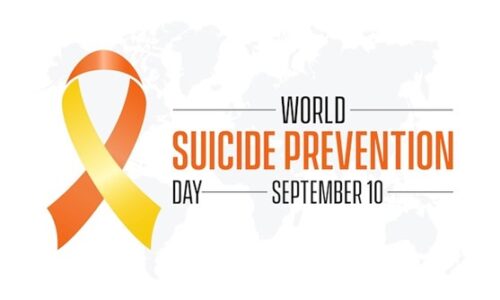Suicide is a tragic and complex issue that affects individuals, families, and communities around the world. In Australia, it is estimated that over 3,000 people die by suicide each year, making it a leading cause of death in the country. The impact of suicide extends beyond personal tragedy; it also has significant implications for the workplace. Employees who are struggling with mental health issues, including suicidal thoughts, may face challenges in performing their jobs effectively and may also be at higher risk of accidents or injuries.Employers can implement to promote mental health and suicide prevention in the workplace.
Overview of industrial manslaughter laws in Australia
In recent years, there has been a growing recognition of the need to hold employers accountable for the safety of their workers. To address this, several Australian states have introduced industrial manslaughter laws. These laws aim to prevent workplace fatalities by imposing criminal liability on employers who engage in negligent or reckless conduct that leads to the death of a worker.
The relationship between suicide and industrial manslaughter laws
The intersection between suicide and industrial manslaughter laws is a complex and sensitive issue. While suicide is a deeply personal act, it can also be influenced by workplace factors such as stress, bullying, or unsafe working conditions. In some cases, it may be difficult to determine whether a death by suicide should be classified as a workplace fatality under industrial manslaughter laws. This raises important questions about how to balance the need for accountability with the recognition of the complex factors that contribute to suicide.
Challenges in addressing the intersection of suicide and industrial manslaughter laws
Addressing the intersection of suicide and industrial manslaughter laws presents several challenges. Firstly, there is a need for better data collection and reporting on suicides in the workplace. Currently, there is limited data available on the number of suicides that occur in work settings, making it difficult to accurately assess the scope of the problem. Additionally, there is a stigma associated with mental health and suicide, which can make it challenging for individuals to seek help or for employers to address these issues openly.
Worksafe v Victorian Building Authority
A recent case involving Worksafe and the Victorian Building Authority highlights the complexities of addressing suicide within the context of industrial manslaughter laws. In this case, a construction worker died by suicide after experiencing workplace bullying. While the employer was found to have breached their duty of care, it was ultimately determined that the death did not meet the criteria for industrial manslaughter. This case highlights the need for a more nuanced approach to addressing suicide within the framework of industrial manslaughter laws.
Legal responsibilities for employers in preventing suicides in the workplace
Employers have a legal responsibility to provide a safe and healthy work environment for their employees. This includes taking reasonable steps to prevent suicides in the workplace. To fulfill this responsibility, employers can implement a range of strategies, such as promoting mental health awareness, providing training on suicide prevention, and fostering a supportive work culture. It is important for employers to recognize that addressing mental health and suicide prevention is not only a legal obligation but also a moral imperative.
Strategies for promoting mental health and suicide prevention in the workplace
There are several strategies that employers can implement to promote mental health and suicide prevention in the workplace. Firstly, they can provide access to mental health resources and support services, such as employee assistance programs or counseling services. This can help employees who may be struggling with mental health issues to seek help and support. Secondly, employers can create a culture of openness and support by fostering communication and providing opportunities for employees to share their experiences and concerns. Finally, employers can promote work-life balance and encourage healthy coping mechanisms, such as exercise and stress reduction techniques.
The role of mental health support services in addressing this issue
Mental health support services play a crucial role in addressing the intersection of suicide and industrial manslaughter laws. These services can provide confidential and accessible support to individuals who may be at risk of suicide or struggling with mental health issues. It is important for employers to partner with reputable mental health support services to ensure that their employees have access to the resources they need. By working together, employers and mental health support services can create a comprehensive approach to addressing mental health and suicide prevention in the workplace.
Recommendations for improving the response to suicide within industrial manslaughter laws
To improve the response to suicide within the framework of industrial manslaughter laws, several recommendations can be made. Firstly, there is a need for increased collaboration between government agencies, employers, mental health support services, and other stakeholders to develop comprehensive strategies for addressing mental health and suicide prevention in the workplace. Secondly, there should be a focus on destigmatizing mental health and creating a culture of openness and support within organizations. Finally, there is a need for ongoing education and training on mental health and suicide prevention for employers, managers, and employees.
Conclusion: Moving towards a safer and more compassionate workplace
Addressing the intersection of suicide and industrial manslaughter laws is a complex and challenging task. However, by recognizing the importance of mental health and suicide prevention in the workplace, employers can take meaningful steps towards creating a safer and more compassionate work environment. Through collaboration, education, and the implementation of effective strategies, we can work towards reducing the incidence of suicide in the workplace and ensuring that all employees have the support they need to thrive. Together, we can create a workplace culture that values mental health and promotes well-being.
If you or someone you know is struggling with mental health or experiencing thoughts of suicide, please reach out to a mental health support service or contact a helpline in your country. Remember, you are not alone, and help is available.
Lifeline: 13 11 14
Access Suicide Prevention Books from Amazon: Suicide Prevention












